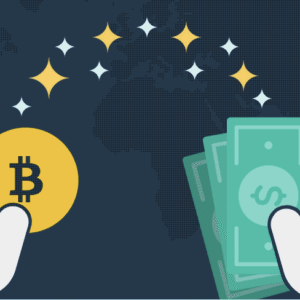Introduction: The Seduction of Sudden Gains
If you’ve ever scrolled through crypto Twitter or a Telegram trading group, you’ve probably seen the hype: “Next 100x coin!”, “Don’t miss this moonshot!”, or “Buy now before it’s too late!” These emotionally charged calls to action are often the first breadcrumb on a treacherous trail—one that leads straight into a pump-and-dump trap.
While crypto offers real opportunities for wealth building, it’s also fertile ground for manipulative schemes. Among the most common is the pump-and-dump—an old trick dressed in new digital clothes. These schemes artificially inflate the price of a coin (the pump), only to have the orchestrators sell at the top, leaving unsuspecting investors holding the bag (the dump).
This guide will walk you through the top 10 warning signs of a crypto pump-and-dump scheme and, more importantly, how to dodge them like a pro. With the right awareness, you can separate signal from noise and protect your portfolio from predatory tactics.
1. Unnatural Price Spikes Without News
One of the most obvious red flags is a sudden price surge without any corresponding news or development. If a little-known token suddenly jumps 200% in a day, ask yourself: Why now?
Legitimate price movements usually follow key announcements such as partnerships, product launches, or exchange listings. A pump-and-dump relies on creating FOMO (fear of missing out) to push prices up artificially. Platforms like CoinMarketCap or CoinGecko can help you monitor historical price data and compare it with relevant news.
2. Overhyped Promotion on Social Media
Be wary of coins that are aggressively promoted on Twitter, Telegram, Discord, and Reddit, especially if they come with vague promises of riches. If influencers or anonymous accounts are shilling the same token repeatedly with exaggerated language, it’s likely part of a coordinated pump.
These promotions often use buzzwords like “undervalued gem,” “guaranteed moonshot,” or “next Dogecoin.” If you notice a coin spreading virally without substance, take a step back. True investments are backed by fundamentals, not just hashtags.
Pro Tip: Use tools like Social Blade or LunarCrush to track social media engagement and spot sudden spikes in mentions.
3. Lack of Whitepaper or Technical Documentation
No whitepaper, no deal.
A credible crypto project usually publishes a detailed whitepaper outlining its vision, technology, roadmap, and tokenomics. If you can’t find one—or the one you do find is vague, copied, or poorly written—you’re likely looking at a scam project.
To evaluate a whitepaper:
- Check for clarity and originality
- Look for specifics about utility, scalability, and team credentials
- Verify if the roadmap is realistic and detailed
Check resources like Whitepaper Database for legitimate project documents.
4. Anonymous or Unverifiable Team
Would you invest in a company if you didn’t know who was running it?
In pump-and-dump schemes, project leaders are often anonymous or use fake identities. A legitimate team should have verifiable LinkedIn profiles, previous experience in tech or finance, and a public presence.
Use platforms like LinkedIn and Google to cross-reference team member credentials. If all you find are cartoons or avatars as team bios, it’s a major red flag.
5. Guaranteed Returns and Unrealistic Promises
If it sounds too good to be true, it is.
Promising guaranteed profits or saying a coin will “10x in 24 hours” is a classic pump-and-dump tactic. Unlike regulated financial markets, crypto lacks oversight—which scammers exploit by making bold, unfounded claims.
Genuine projects are cautious and transparent about potential risks. Overpromising and underdelivering is a hallmark of fraud.
6. Low Liquidity and Trading Volume
A token with low liquidity is easy to manipulate.
Pumpers often target coins on obscure exchanges or decentralized platforms where trading volume is thin. This allows them to drive the price up with relatively small amounts of capital, fooling others into jumping in.
Compare volumes across platforms using tools like CryptoCompare or CoinPaprika. If a token’s 24-hour volume is under $100,000, approach with caution.
7. Coordinated Buy Signals from Influencers
You might see a group of influencers or community leaders suddenly promote the same coin. This is often an orchestrated effort to drive mass interest.
These influencers may have early access to tokens and stand to gain once prices surge. Once the dump begins, they disappear—along with your money.
Look out for:
- Identical or near-identical tweets/posts across multiple accounts
- Influencers pushing the coin with urgency and hype
- Sudden shifts in sentiment once the price peaks
8. Sudden Influx of New Telegram or Discord Members
Pump-and-dump groups often coordinate on Telegram or Discord. A sudden influx of members, often from invite-only links, can signal manipulation.
Many of these groups stage the dump phase by giving early signals to insiders while leaving new members exposed. If the community is full of hype but lacks meaningful discussions about the technology or roadmap, consider that a red flag.
Watch for: Bots, shill-heavy chats, and a lack of admin transparency.
9. Listing on Unknown or Unregulated Exchanges
Most pump-and-dump schemes start on low-volume, unregulated exchanges, where oversight is minimal. These exchanges don’t require stringent KYC processes and often list tokens with little due diligence.
Compare with credible platforms like Binance, Coinbase, or Kraken, which follow stricter listing policies. Use CoinMarketCap’s exchange rankings to assess platform credibility.
10. Tokenomics Favor Insiders
Many scam tokens are structured to benefit early adopters or the project founders at the expense of retail investors.
Watch out for:
- Large token allocations to the team or influencers
- No vesting schedule, allowing them to sell immediately
- High staking rewards that dilute token value
Carefully read token distribution charts, often available on the project’s site or whitepaper. Projects like Messari provide transparent breakdowns of tokenomics for major tokens.
Comparison Table: Legitimate Projects vs. Pump-and-Dump Schemes
| Feature | Legitimate Project | Pump-and-Dump Scheme |
|---|---|---|
| Whitepaper | Detailed, transparent | Vague, missing, or plagiarized |
| Team | Public, verifiable credentials | Anonymous or fake identities |
| Price Movement | Correlates with news/updates | Sudden and unexplained surges |
| Exchange | Listed on regulated, high-volume platforms | Obscure or unregulated exchanges |
| Social Media Promotion | Professional, informative | Aggressive, hype-driven |
| Token Distribution | Balanced, with vesting periods | Favors insiders, often no lock-up |
Final Thoughts: Stay Sharp, Stay Skeptical
The crypto world is still the Wild West. For every legitimate opportunity, there’s a mirage ready to vanish the moment you invest.
Recognizing the warning signs of a pump-and-dump scheme can protect you not just from losing money, but from losing confidence in this revolutionary space. Use research, critical thinking, and caution as your default tools.
Avoid the trap of easy gains. Focus on projects with real value, teams with accountability, and communities that care more about development than hype.
Because in crypto, being an early adopter is great—but being an educated one? That’s how you win.
Stay safe, stay smart, and always ask: What’s the value behind the hype?






